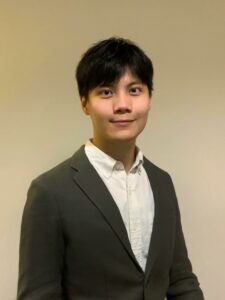CUHK
News Centre
CUHK study shows Hong Kong people live longer but have increasing disability problems in old age, with significant socio-economic inequalities
The Chinese University of Hong Kong (CUHK)’s Faculty of Medicine (CU Medicine) and the CUHK Institute of Health Equity conducted a study to assess the temporal trends and area-level socioeconomic inequalities in life expectancy (LE) and disability-free life expectancy (DFLE) at age 65 in Hong Kong between 2007 and 2020. The results showed that the proportion of time old people living with disability has been increasing in Hong Kong. Also, apparent socioeconomic gradients of LE and DFLE were observed across 18 districts in the territory. The findings have been published in The Lancet Regional Health – Western Pacific, an international peer-reviewed medical journal within The Lancet Group.
Population health monitoring beyond life expectancy
Hong Kong has overtaken Japan to lead the world in longevity over the past decade. Professor Roger Chung Yat-nork, Associate Professor in the Jockey Club School of Public Health and Primary Care at CU Medicine, said, “Life expectancy considers only the quantity but not quality of life, and so an improved life expectancy does not necessarily reflect a better state of health. The paradigm shift towards functioning and quality of life from simply emphasising the quantity of life alone has led to the development of ‘healthy life expectancy’, broadly defined as the average number of years that a person can expect to live in full health, calculated by taking into account years lived in less than full health due to disease and/or injury. In other words, it is a single composite measure that incorporates both mortality and health status.”
Among the possible measures of healthy life expectancy, DFLE is one of the most widely used indicators that takes into account the disability burden of a population. By comparing the DFLE at old age and the associated proportion of years lived in a healthy state, one can evaluate the progress of healthy ageing in society.
Expansion rather than compression of disability burden in Hong Kong
The CUHK study retrieved and collated secondary data on the age- and gender-specific rates of mortality and disability, as well as the population structure and Hong Kong life tables in corresponding years, from the Census and Statistics Department of Hong Kong. While the official figures for LE at age 65 increased by 3.7 years in men and by 2.1 years in women between 2007 and 2020, the estimated DFLE increased more slowly, by 1.8 years in men and by only 0.1 years in women (please refer to Table 1 in appendix).
Professor Gary Chung Ka-ki, Research Assistant Professor in the Jockey Club School of Public Health and Primary Care at CU Medicine, said, “This alarming result implies a substantial increase in the proportion of life spent with disability, leading to an expansion of the disability burden among the Hong Kong population (please refer to Table 2 in appendix). Our study strongly affirms that it is inadequate to focus on LE alone, which may be a façade that conceals the problems related to the burden of disease. DFLE is a critical indicator that should be routinely adopted in Hong Kong not only to assess and monitor the progress of improvement in population health and healthy ageing, but also to offer a more comprehensive picture of the health equity situation of society.”
Apparent area-level socioeconomic inequalities in LE and DFLE
As data on disability rates across 18 districts were available in 2013, the research team further assessed the area-level socioeconomic inequalities in LE and DFLE. Results based on multiple linear regression showed clear socioeconomic gradients for both LE and DFLE, with average increases of 0.81 years for LE and 0.68 years for DFLE per 10% increase in the proportion of older adults with a secondary education or above across districts.
Professor Gary Chung added, “The presence of socioeconomic inequalities in health expectancy across districts highlights the inadequacies of current efforts to address the underlying social determinants of health with an equity focus. Taken together, our findings underscore the urgent need for comprehensive policy approaches to promoting healthy ageing for all in Hong Kong.”
The study was supported by the Health Bureau’s Health and Medical Research Fund.





